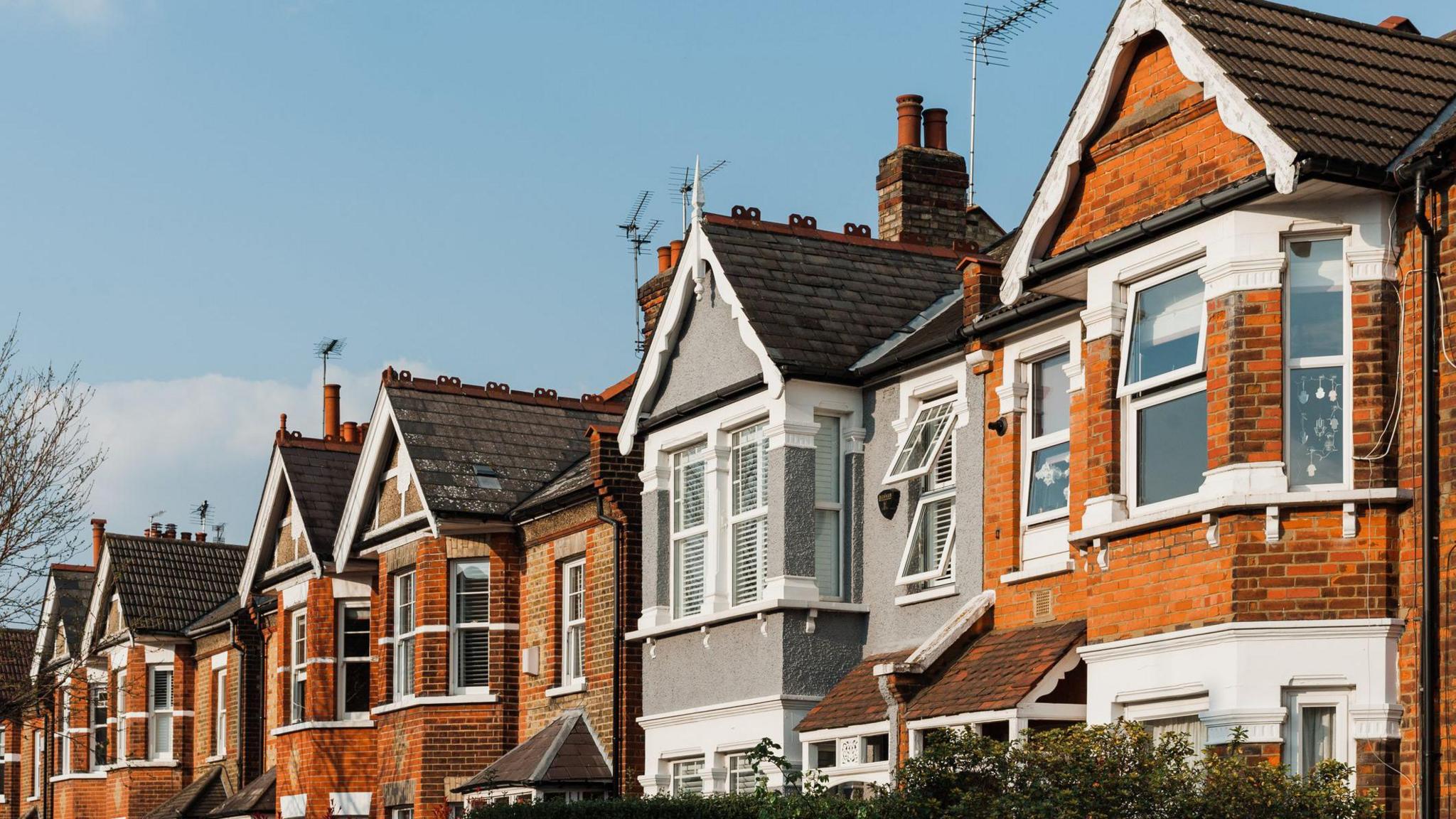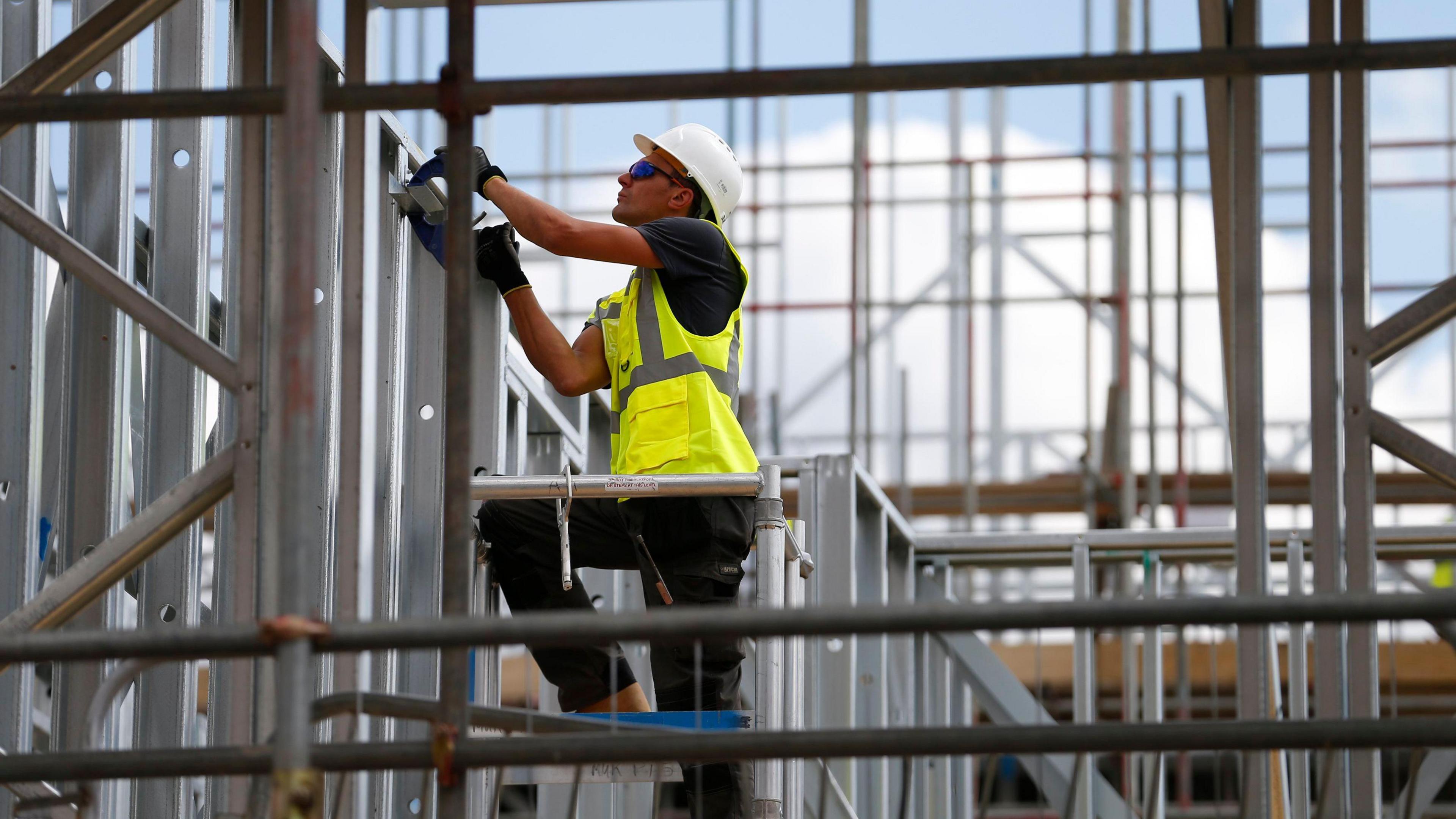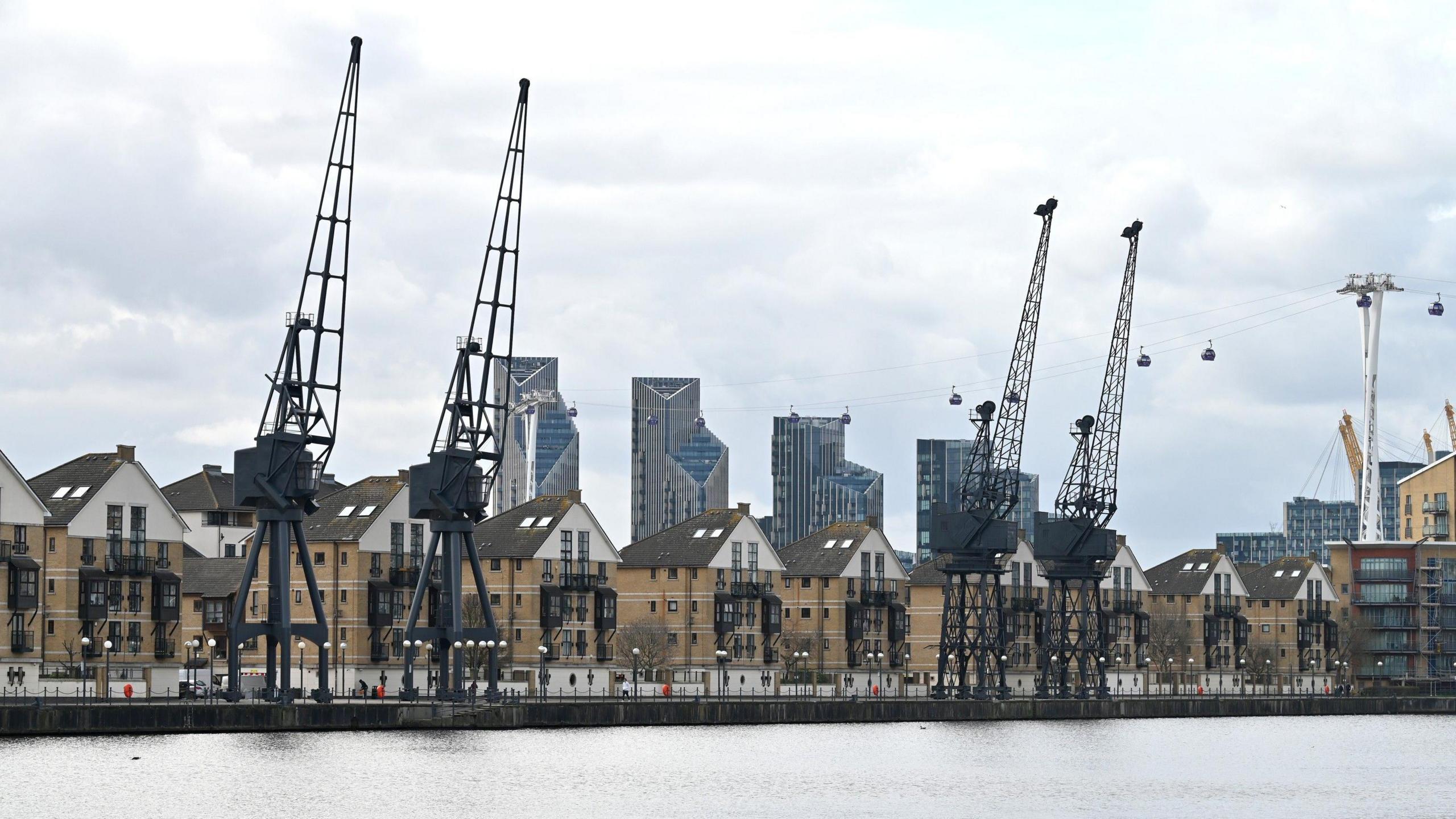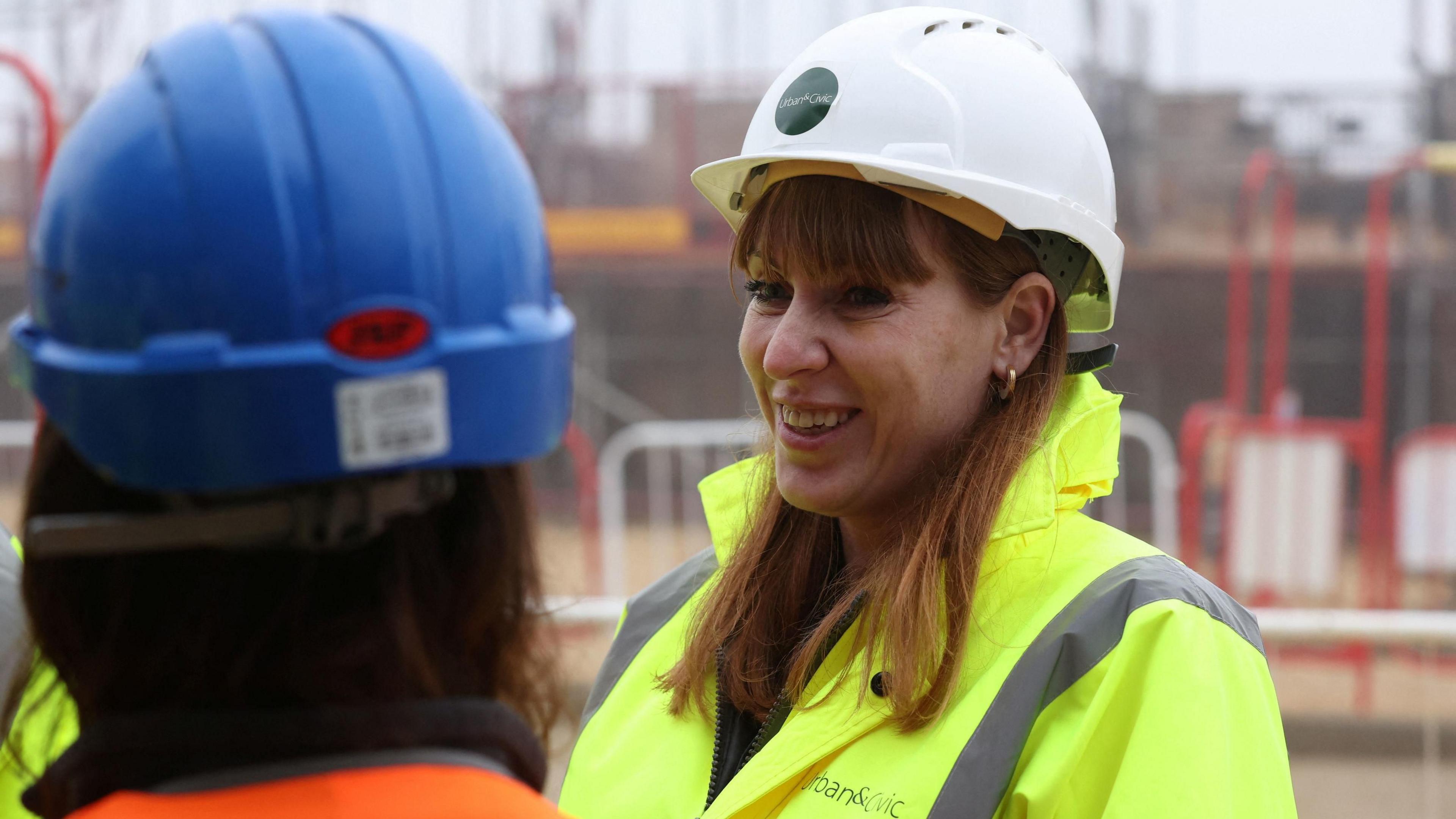London's 'spiralling' housing crisis in numbers

Many Londoners are struggling to find or keep a home
- Published
London is Europe's wealthiest city, yet for many living in the capital, having a place to call home feels out of reach, according to the Centre for London (CfL).
Earlier this week, the independent think tank hosted the London Housing Summit, highlighting the challenges of - and possible solutions to - the housing crisis, which it says is "spiralling out of control".
Experts agree it is a complex issue, but what do figures show us about the scale of the problem?
London had 4,427 rough sleepers between January and March 2025

Rough sleeping is at an "all time high" in London according to the CHAIN report
According to data collected by the Combined Homelessness and Information Network (CHAIN), external, there was an 8% increase in rough sleeping in the capital on the same period in 2024.
New rough sleepers account for almost half (47%) of the total number of those sleeping rough, intermittent rough sleepers account for 39% and 16% of the recorded number of rough sleepers were living on the streets.
CHAIN's latest annual report for 2024/25 reveals rough sleeping in London has reached an "all time high".
The Mayor of London, Sir Sadiq Khan, has committed to ending rough sleeping in London by 2030, and in January 2025 he announced an additional £10m investment, external in a bid to achieve this goal.
The money will go towards expanding the network of its Ending Homelessness Hubs, which provide 24/7 specialist support for people new to rough sleeping and prevention services.
London councils spend £4m a day on temporary accommodation
Councils have legal duty to house local people who become homeless. Typically, they put people up in hotels or hostels until more permanent arrangements can be made.
So, as homelessness has increased in recent years, so therefore has the financial burden on local authorities.
The umbrella group representing London's boroughs has said the current spending on temporary accommodation is "unsustainable" and puts many councils at risk of becoming "effectively bankrupt", creating "massive uncertainty" to the future of local services.
London Councils says boroughs overspent on the 2024/25 homelessness budget by £330m - with spending in this area increasing by 68% in a single year.
According to its recent analysis, more than 183,000 Londoners are currently homeless and living in temporary accommodation such as hostels arranged by their local boroughs.
This includes 90,000 children, which equates to more than one per classroom, London Councils says.
The human impact of these figures is something the Housing and Mental Health Network aims to highlight to policymakers.
Speaking at the London Housing Summit, Dr Sally Zlotowitz, co-chair of the network, said it was a "growing concern" that people in temporary accommodation were "internalising an issue that is a structural crisis".
London Councils' executive member for housing, Grace Williams, has labelled this an "emergency" that was "devastating the lives of too many Londoners".
The organisation has called on the government to support councils by increasing funding for both short term temporary accommodation needs and longer-term solutions – like boosting grant funding for affordable housing.
A government spokesperson said: "We inherited a serious housing crisis, which is why we are taking urgent and decisive action to end homelessness, fix the foundations of local government and drive forward our Plan for Change.
"We are providing £1bn for crucial homelessness services so councils can support families faster. This is an increase of £233m from 2024 - 25, and London Boroughs have had a funding uplift by more than £78m.
"We are also tackling its root causes by building 1.5 million new homes, boosting social and affordable housing and abolishing section 21 no fault evictions."
Fewer rental homes available and rising prices

Sold properties are not being replaced by other private rentals
The private rental sector in London has shrunk, as landlords increasingly decide to sell their properties.
According to analysis by Trust for London, external, 45,000 homes were lost from the sector in this way between April 2021-December 2023, equating to a net reduction of 4.3%.
The charity also said the sector was shrinking at a much faster rate the most affordable areas to rent in, which it believed had a "particular impact" on the ability of low-income households to access private rented homes.
The National Residential Landlords Association said "uncertainty over proposed tax and regulatory changes is leading many landlords to consider leaving the market".
The association added that the demand for private rental homes continued to increase, which was driving up costs for renters as well as reducing choice.
London's 2.7 million private tenants saw their rents rise by 11.5% in 2024, with the capital experiencing the largest increases in England, according to the Office for National Statistics (ONS)., external
Polling released this week by Centre for London revealed three in five London renters said rent was unaffordable to them personally.
London needs to build 88,000 homes a year, an annual cost of £2.2bn
Both the need for homes - and the cost of building them - is greater in London than anywhere else in the country, Centre for London analysis has found.
The upfront costs in London are 43 times higher than in the West Midlands and 36 times higher than in Greater Manchester.
The think tank's research shows building the number of homes needed in the borough of Wandsworth, which has the highest upfront costs in England, will cost four times more than what it would cost to deliver the entire housing target for West Midlands.
This comes as polling by the think-tank revealed 45% of Londoners questioned on what they think the biggest problems within London's housing market are, said it was that first-time buyers cannot afford a home.
A spokesperson for the Mayor of London said: "The mayor will continue to work in partnership with the government to deliver more genuinely affordable homes through the planning system and new investment so that we can tackle London's housing crisis and build a fairer London for everyone."
Deputy Prime Minister and Housing Secretary Angela Rayner has said there is "no time to waste" and that it's "crucial" to "get Britain building".
While targets are in place for new homes – delegates at the London Housing Summit this week raised concerns about the existing housing stock in London.
Centre for London's polling revealed a third of Londoners have experienced damp and mould and over a quarter were unable to keep their homes warm.
Housing campaigner Kwajo Tweneboa uses social media to campaign on issues related to damp and mould and told Eddie Nestor on BBC Radio London, the situation is "horrific", adding "there are times when I ask myself surely it cannot get worse than this?".
During the mayoral election campaign of 2024, Sir Sadiq pledged his support for a rollout of high-tech mould sensors, which City Hall said would provide an "early warning system".
Over 160,000 extra construction workers needed to meet Labour's housebuilding targets

Construction skills remain an issue
Industry leaders have warned there is a 'dire shortage' of construction workers. The latest Office for National Statistics figures , externalshow that there are over 35,000 job vacancies and employers report that over half of vacancies cannot be filled due to a lack of required skills – the highest rate of any sector.
The additional requirement of 160,000 construction workers applies specifically to meeting the need of Labour's housebuilding targets. Ahead of the government's pledge to build 1.5m new homes, the CITB had already estimated, external there would need to be a quarter of a million new construction workers to meet the country's housing demands.
Before the 2025 spring statement, Chancellor Rachel Reeves announced £600m worth of investment to train up to 60,000 more skilled construction workers, and education secretary, Bridget Phillipson has committed to 'skills bootcamps' in the construction sector being expanded, with £100m to train, upskill and develop workers.
So what's the plan for London?
A spokesperson for the Mayor of London said Sir Sadiq Khan had made the capital's housing crisis a "a key priority for his mayoralty".
In 2018, City Hall established the Mayor's Construction Academy (MCA), a scheme aimed at helping Londoners gain the skills needed to enter the construction industry.
The mayor's office said it hoped the MCA would help address the need for more skilled construction workers in London.
Listen to the best of BBC Radio London on Sounds and follow BBC London on Facebook, external, X, external, and Instagram, external. Send your story ideas to hello.bbclondon@bbc.co.uk, external
Get in touch
Are you affected by issues covered in this story? Share your experiences.
Related topics
- Published2 May

- Published14 December 2024
